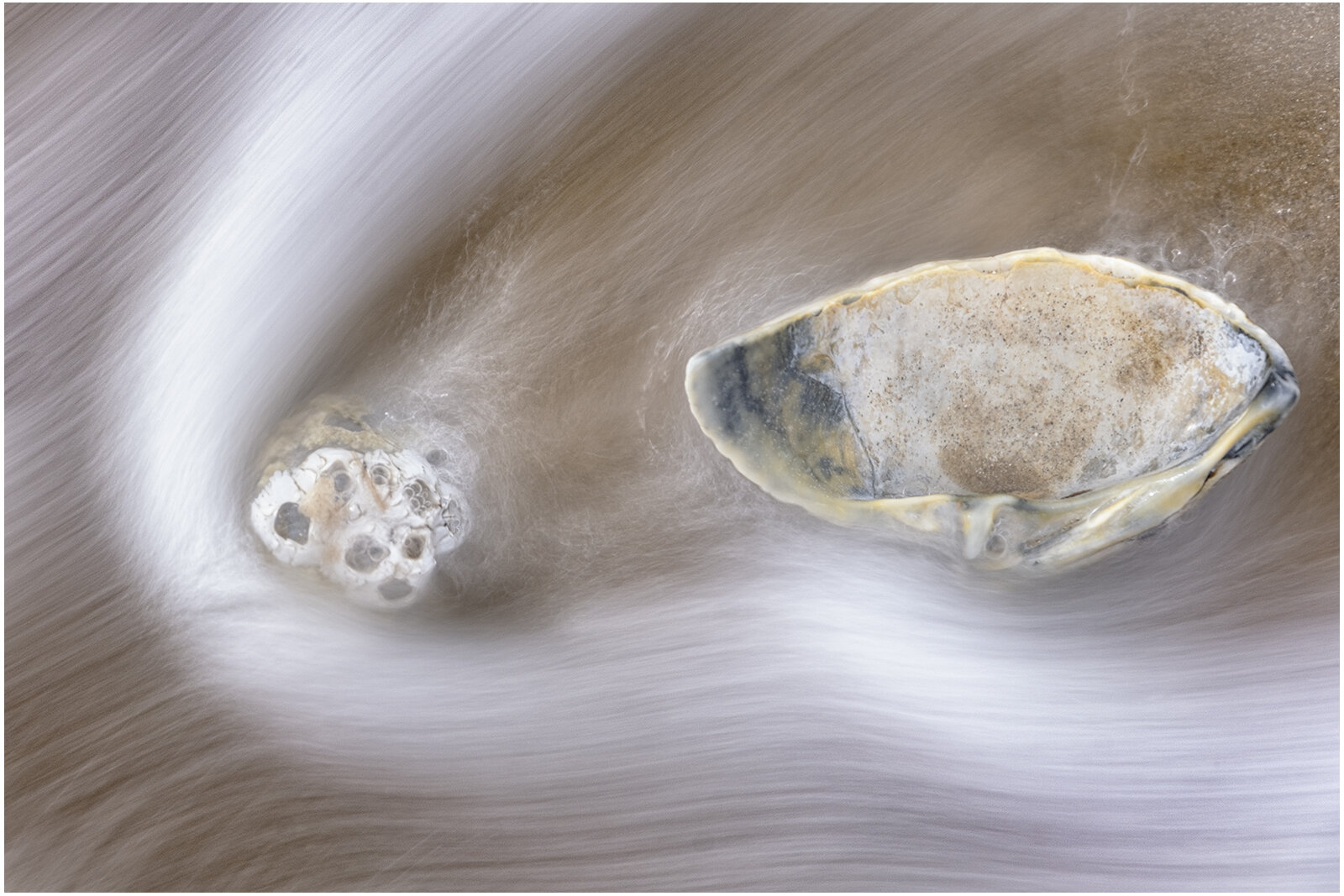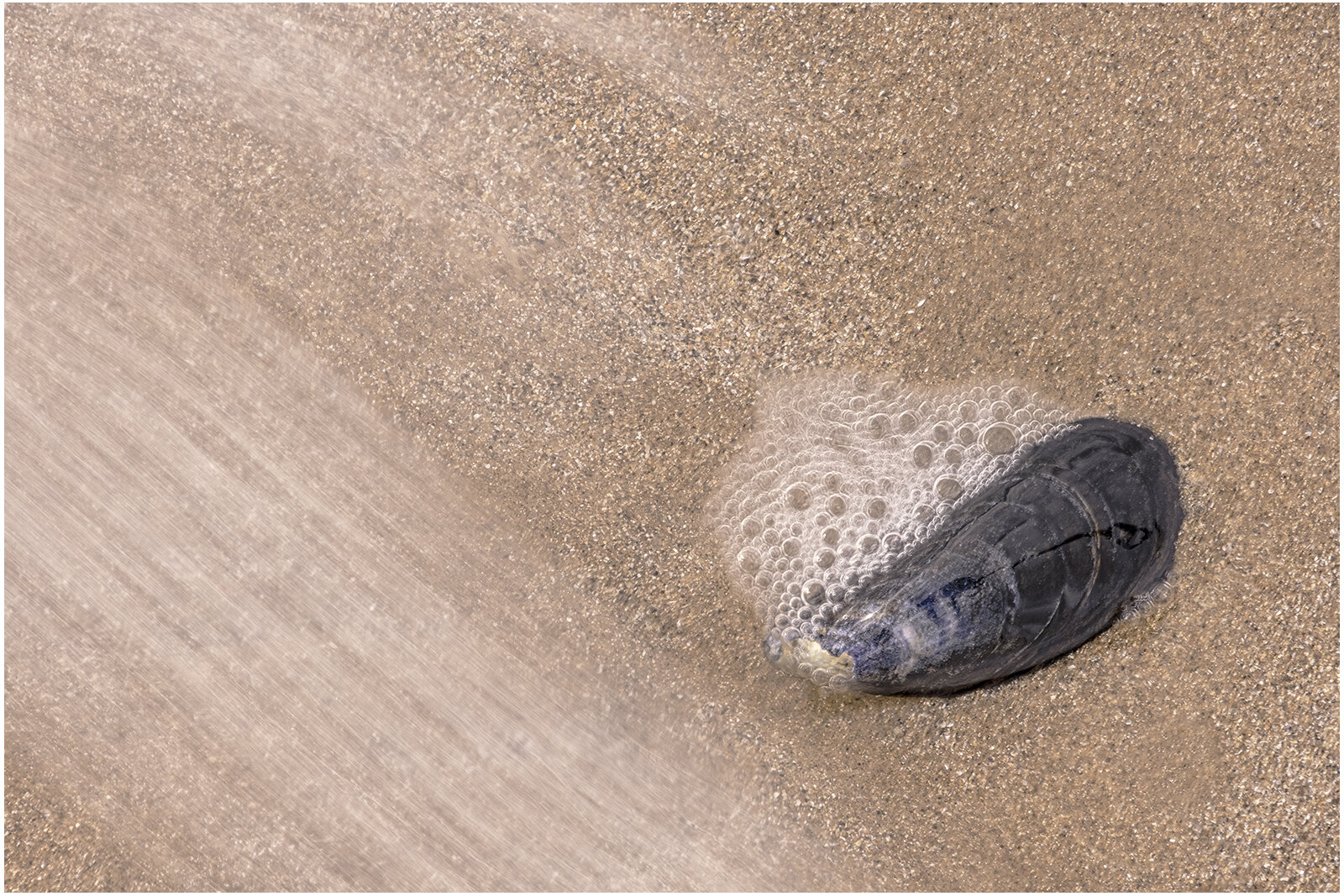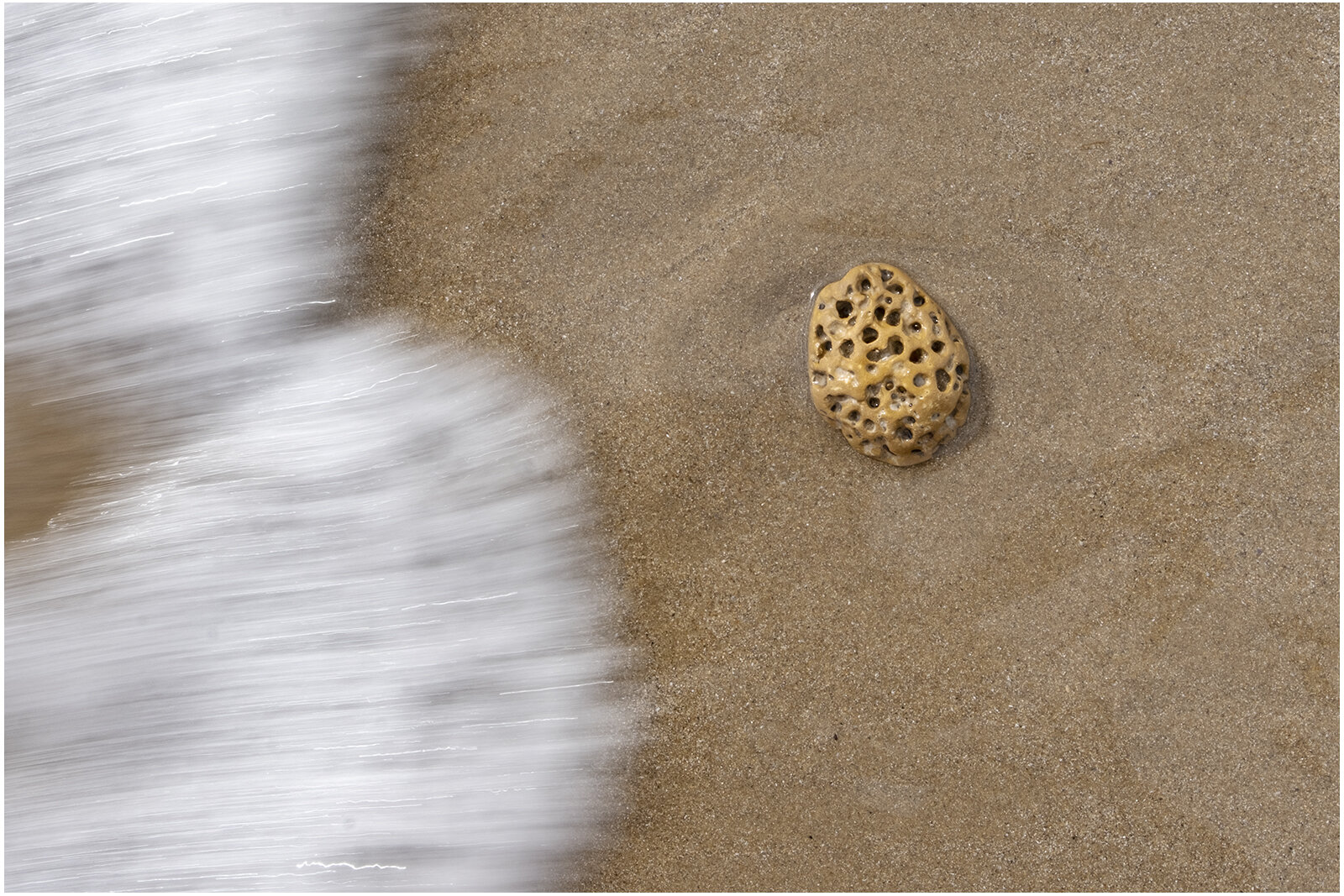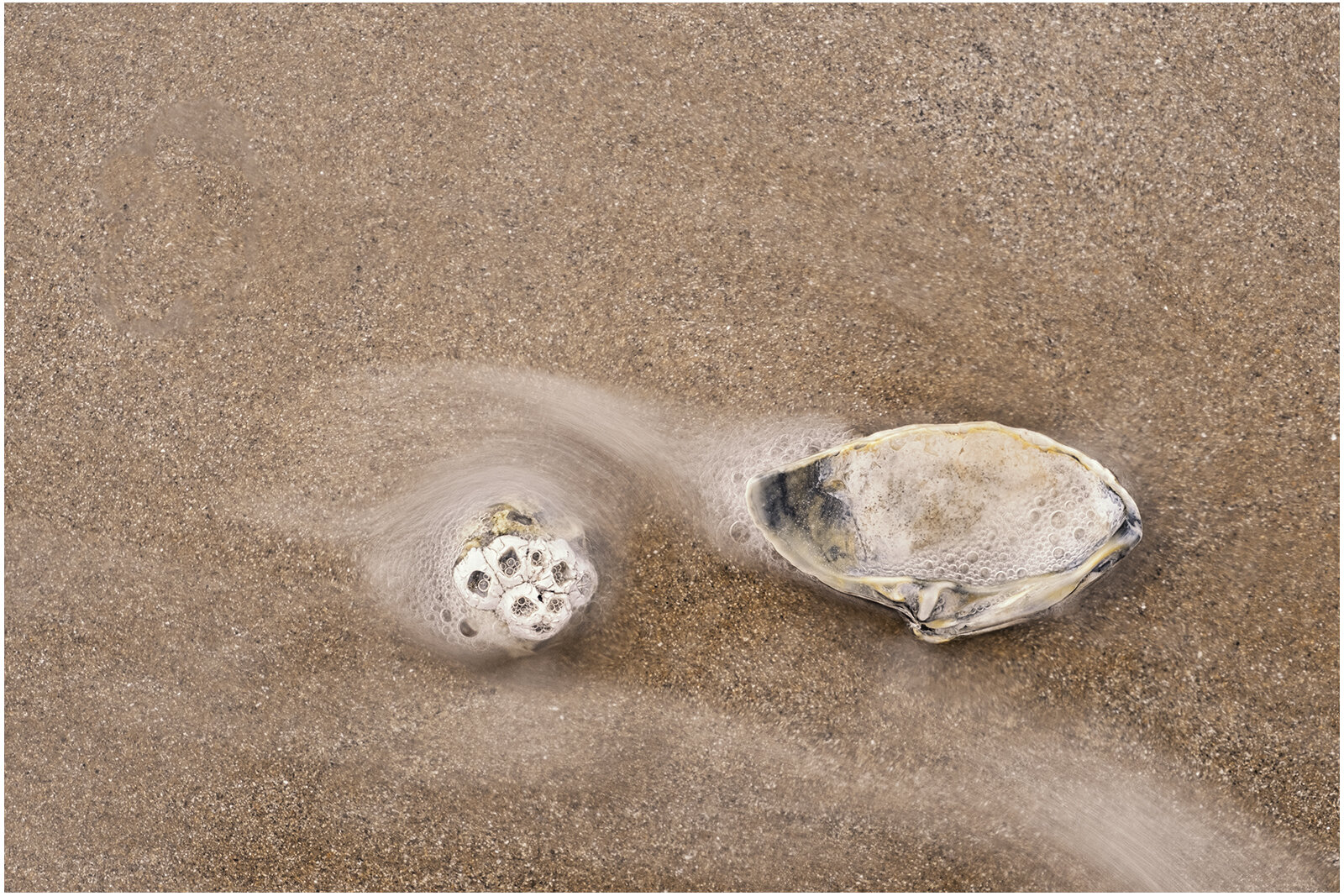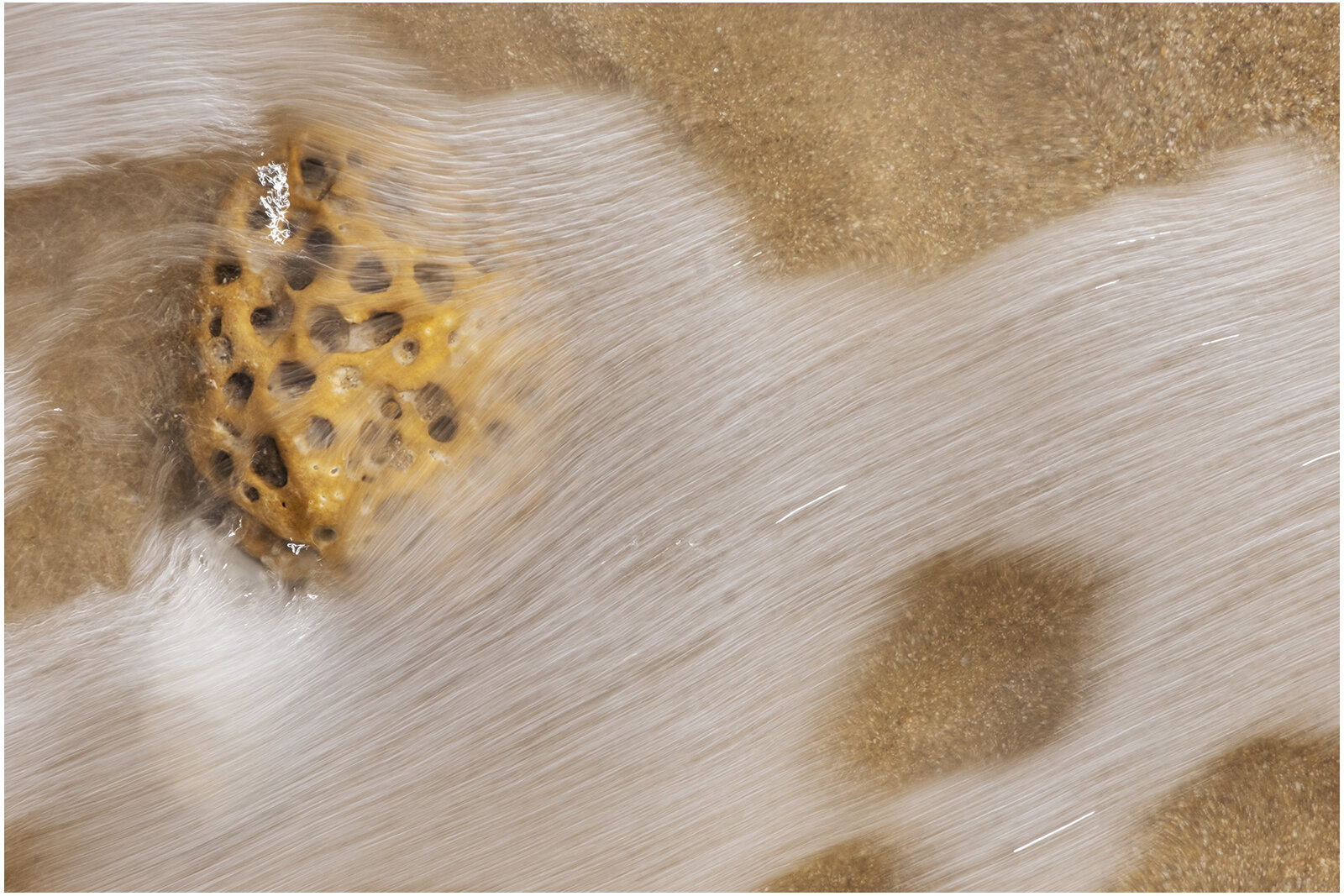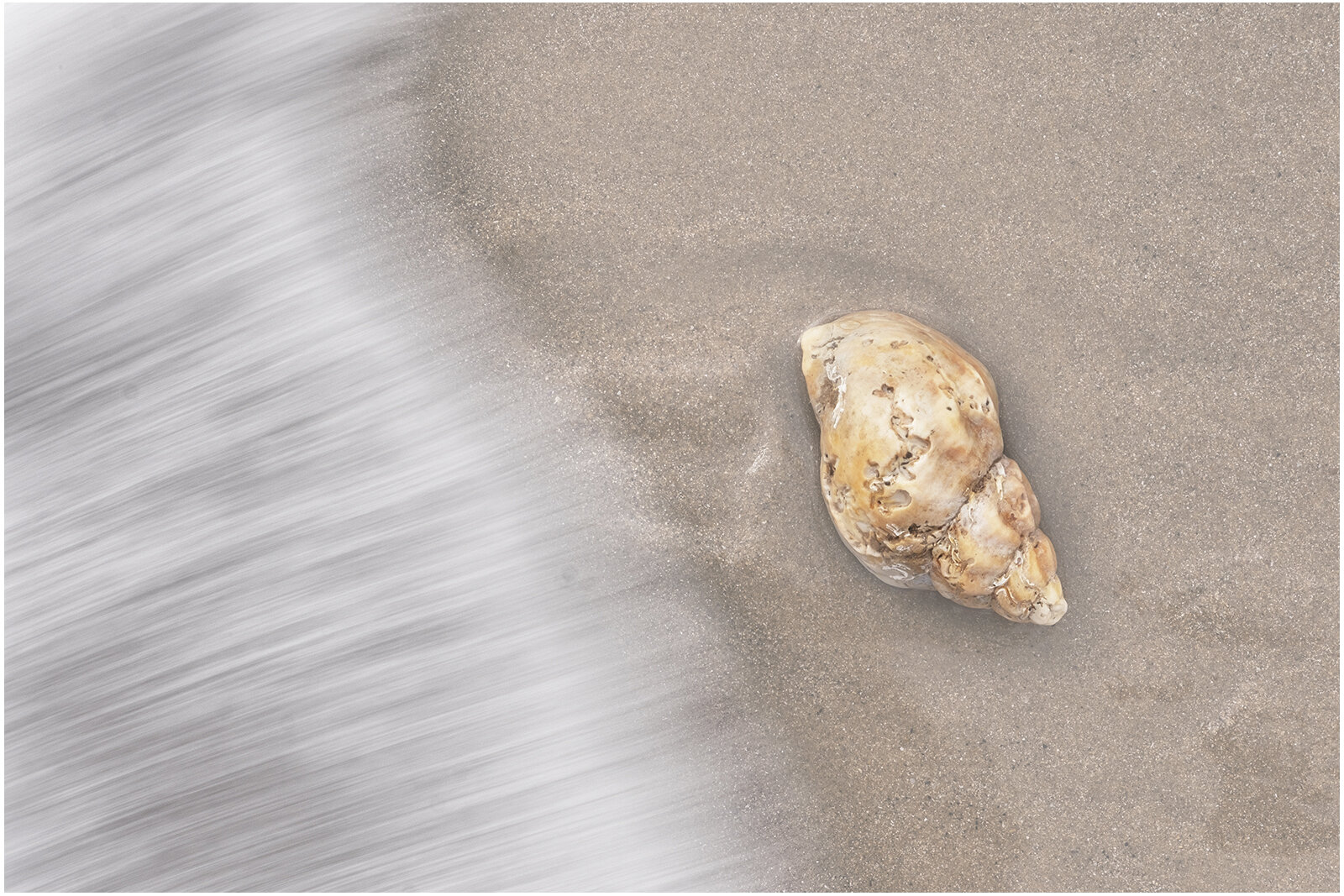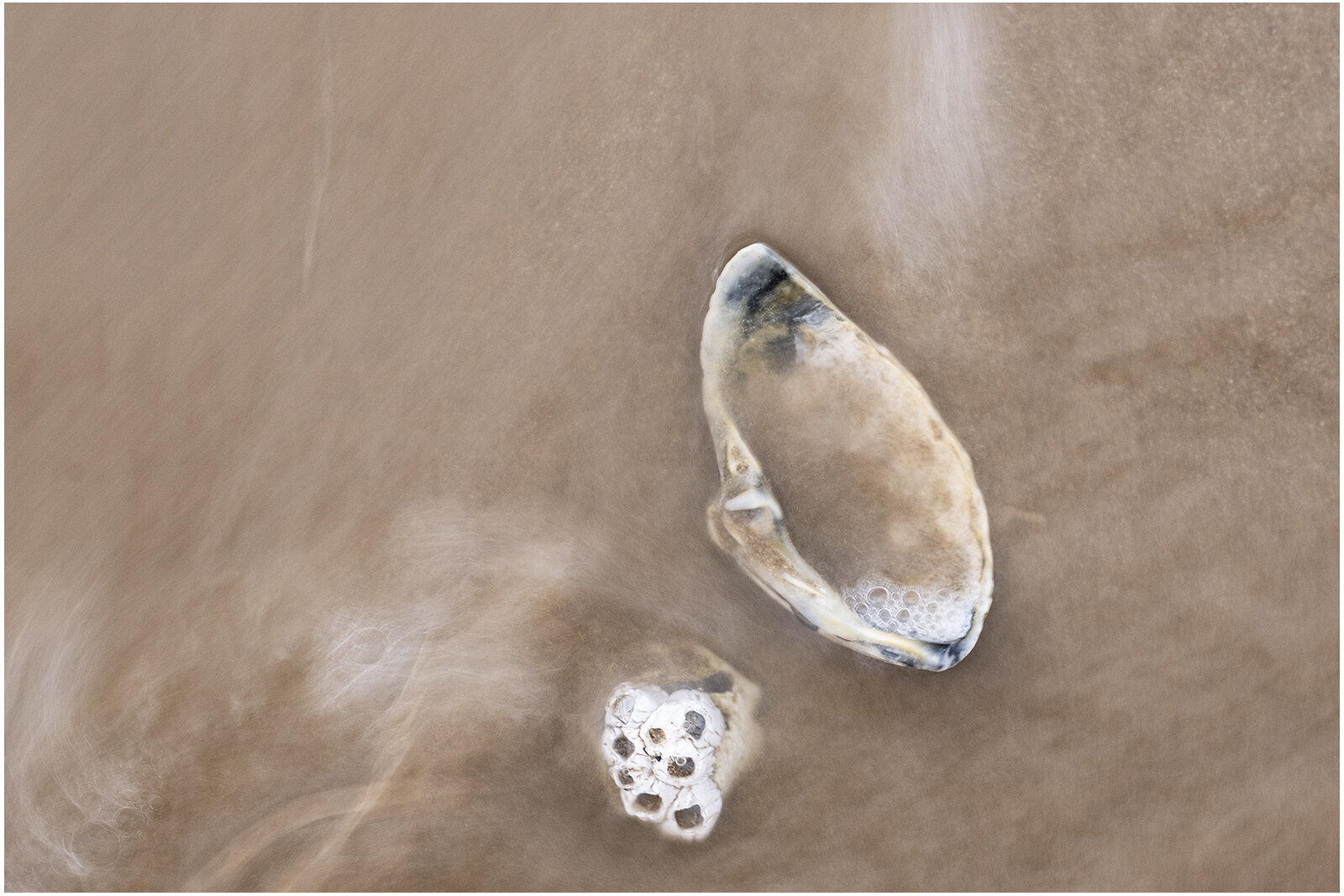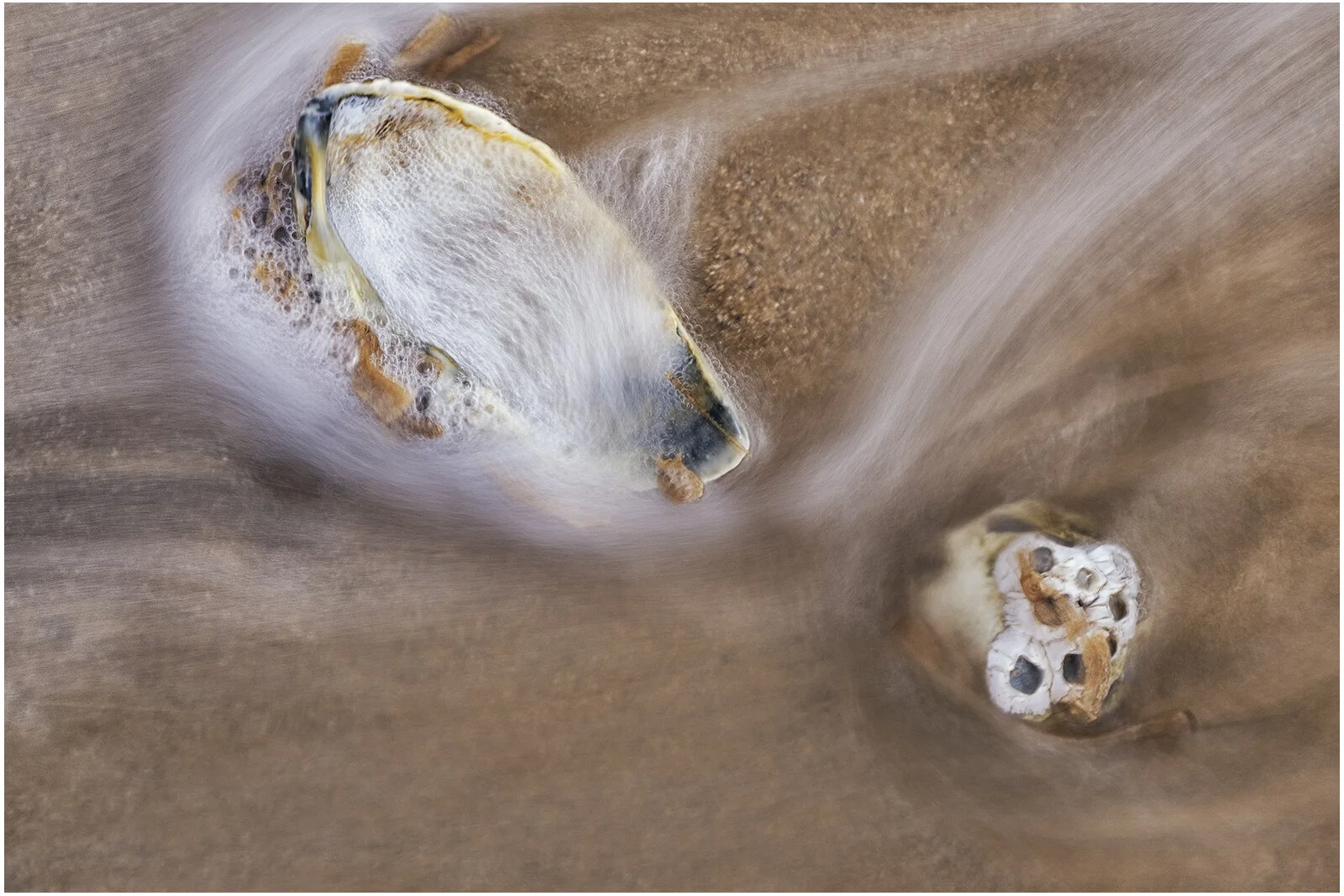Rachael Talibart often features a photograph of an open shell with the sea flowing out of it and I absolutely love it. She has created a gallery of similar photographs on her website and looking through the images it is clear that the scope for beautiful intimate cameos is endless.
Whilst wandering on Bridlington beach I saw quite a few interesting shells and rocks that were being caressed by the incoming tide and so I decided to see what I could do myself.
How hard can it be? Extremely!
The first stage is to select a subject that is lying at the top of the wave reach. This isn’t easy as tides rise and fall at speed and so there is a very short period where any shell is lying in an optimum position. The camera needs to be directly above the subject taking care that you don’t lose sharpness at the edge of the frame.
The biggest challenge is the sea. If the wave doesn’t rise far enough up the beach there is no photograph but more often that not the sea swoops up the sand and carries the subject metres away from your camera. Patience is required, (as are wellies), in order to wait for the “right” wave.
The “right” wave is one that stops just before your shell or one that flows gently past leaving it in situ. You can then choose to catch the wave just before or after it reaches the shell and is running back down the beach.
The other important factor is the shutter speed. A over long shutter speed ensures that all detail is lost in the water but if it is too short there will be no flowlines. On this day I found that a speed of 1/20 sec produced the best results.
Working so close to the shoreline is very challenging but compulsive. There isn’t a lot of control over the final image because the action of the sea is completely random but the results can be lovely. The flow of the sea around and in the shells and stones on the beach produce interesting cameos and effects.
These are my favourite images from a morning spent on Bridlington beach soon after Lockdown 3.
